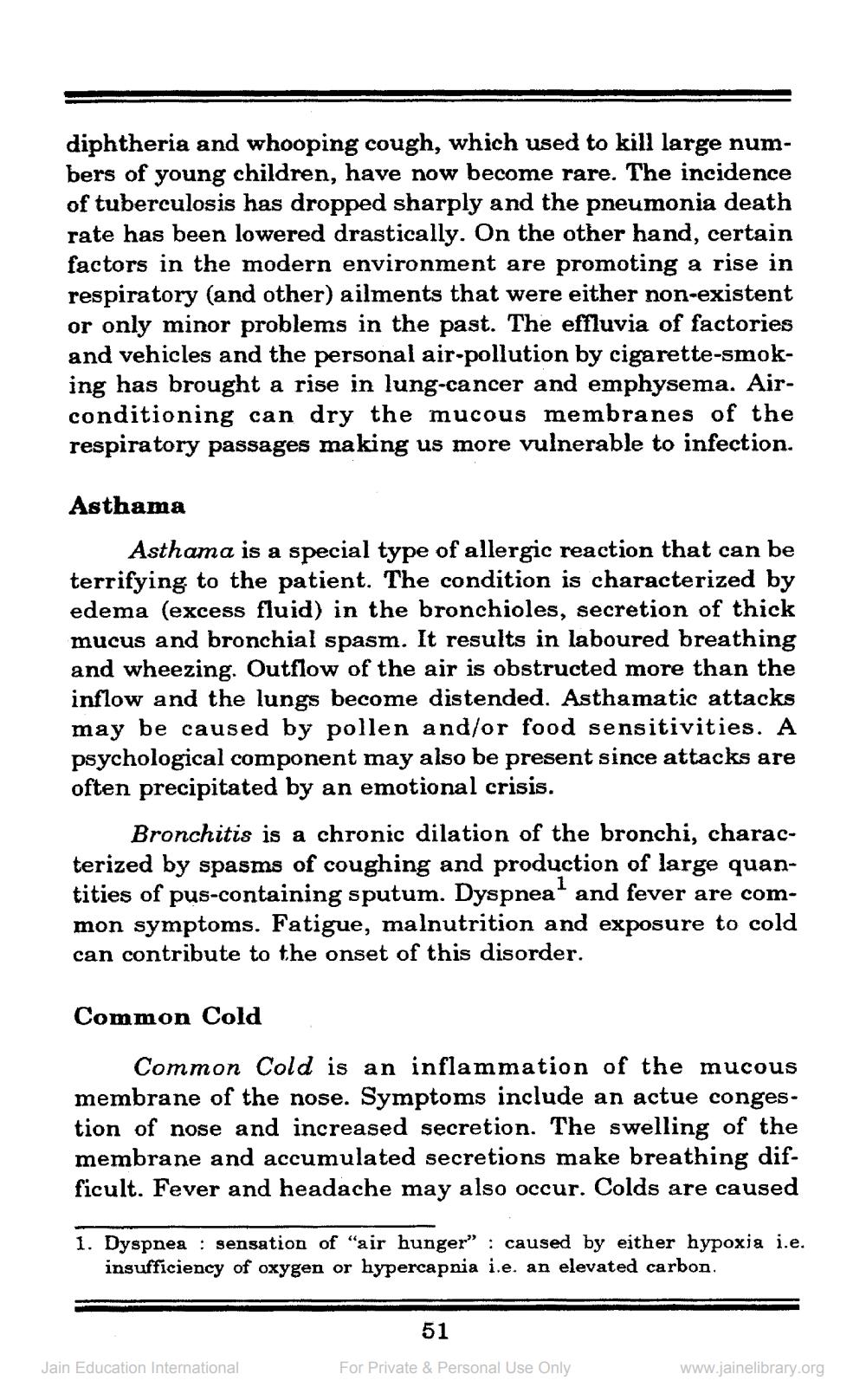________________
diphtheria and whooping cough, which used to kill large numbers of young children, have now become rare. The incidence of tuberculosis has dropped sharply and the pneumonia death rate has been lowered drastically. On the other hand, certain factors in the modern environment are promoting a rise in respiratory (and other) ailments that were either non-existent or only minor problems in the past. The effluvia of factories and vehicles and the personal air-pollution by cigarette-smoking has brought a rise in lung-cancer and emphysema. Airconditioning can dry the mucous membranes of the respiratory passages making us more vulnerable to infection.
Asthama
Asthama is a special type of allergic reaction that can be terrifying to the patient. The condition is characterized by edema (excess fluid) in the bronchioles, secretion of thick mucus and bronchial spasm. It results in laboured breathing and wheezing. Outflow of the air is obstructed more than the inflow and the lungs become distended. Asthamatic attacks may be caused by pollen and/or food sensitivities. A psychological component may also be present since attacks are often precipitated by an emotional crisis.
Bronchitis is a chronic dilation of the bronchi, characterized by spasms of coughing and production of large quantities of pus-containing sputum. Dyspnea' and fever are common symptoms. Fatigue, malnutrition and exposure to cold can contribute to the onset of this disorder.
Common Cold
Common Cold is an inflammation of the mucous membrane of the nose. Symptoms include an actue congestion of nose and increased secretion. The swelling of the membrane and accumulated secretions make breathing difficult. Fever and headache may also occur. Colds are caused
1. Dyspnea : sensation of "air hunger" : caused by either hypoxia i.e.
insufficiency of oxygen or hypercapnia i.e. an elevated carbon.
51 For Private & Personal Use Only
Jain Education International
www.jainelibrary.org




